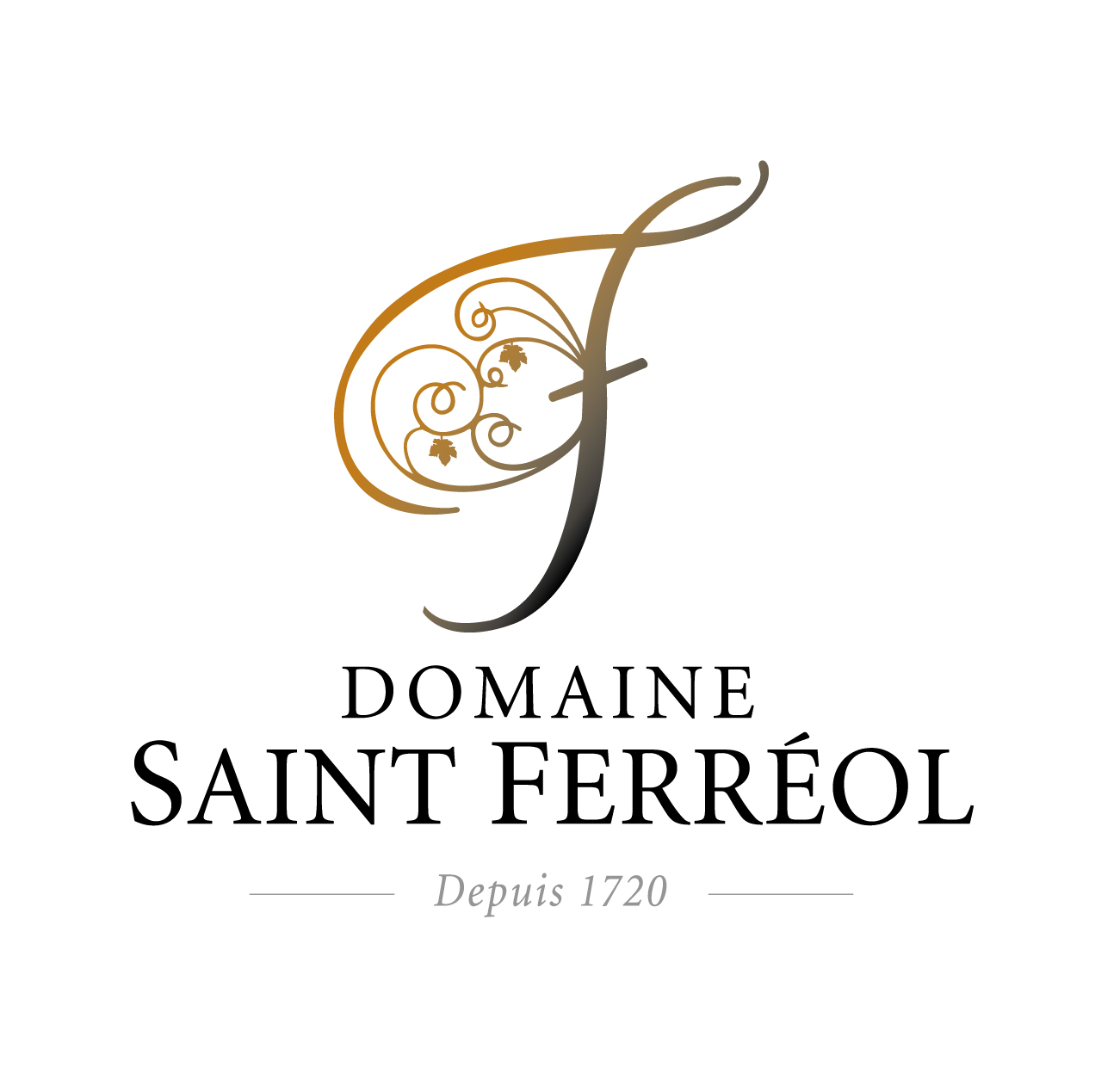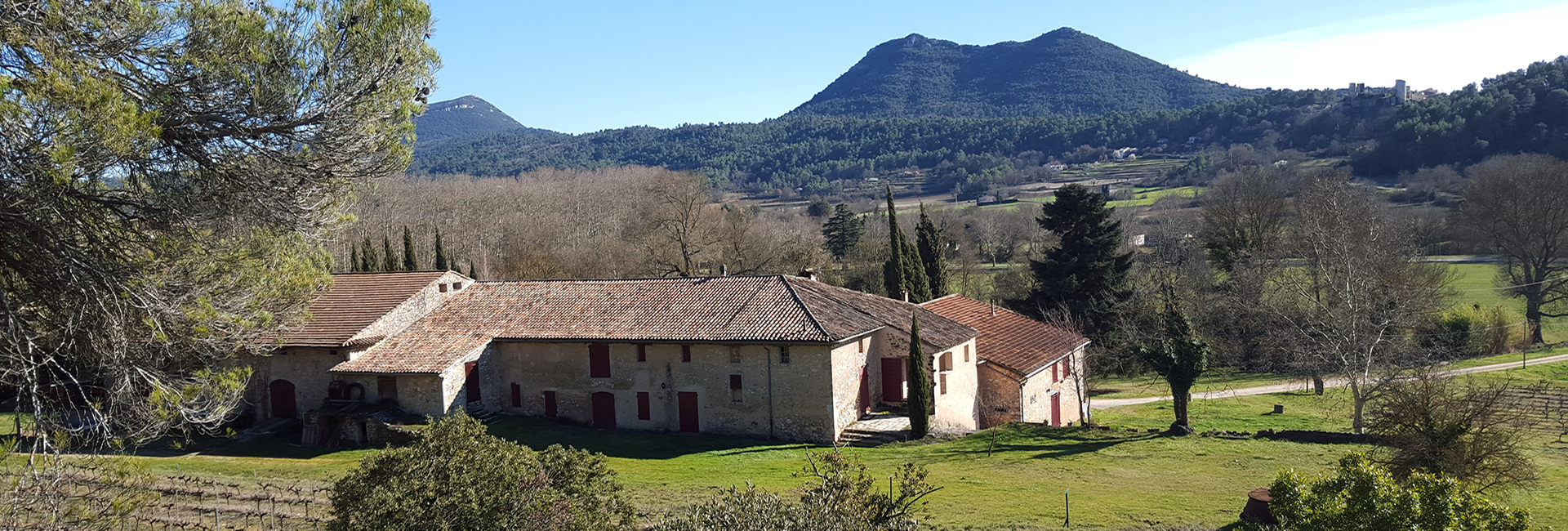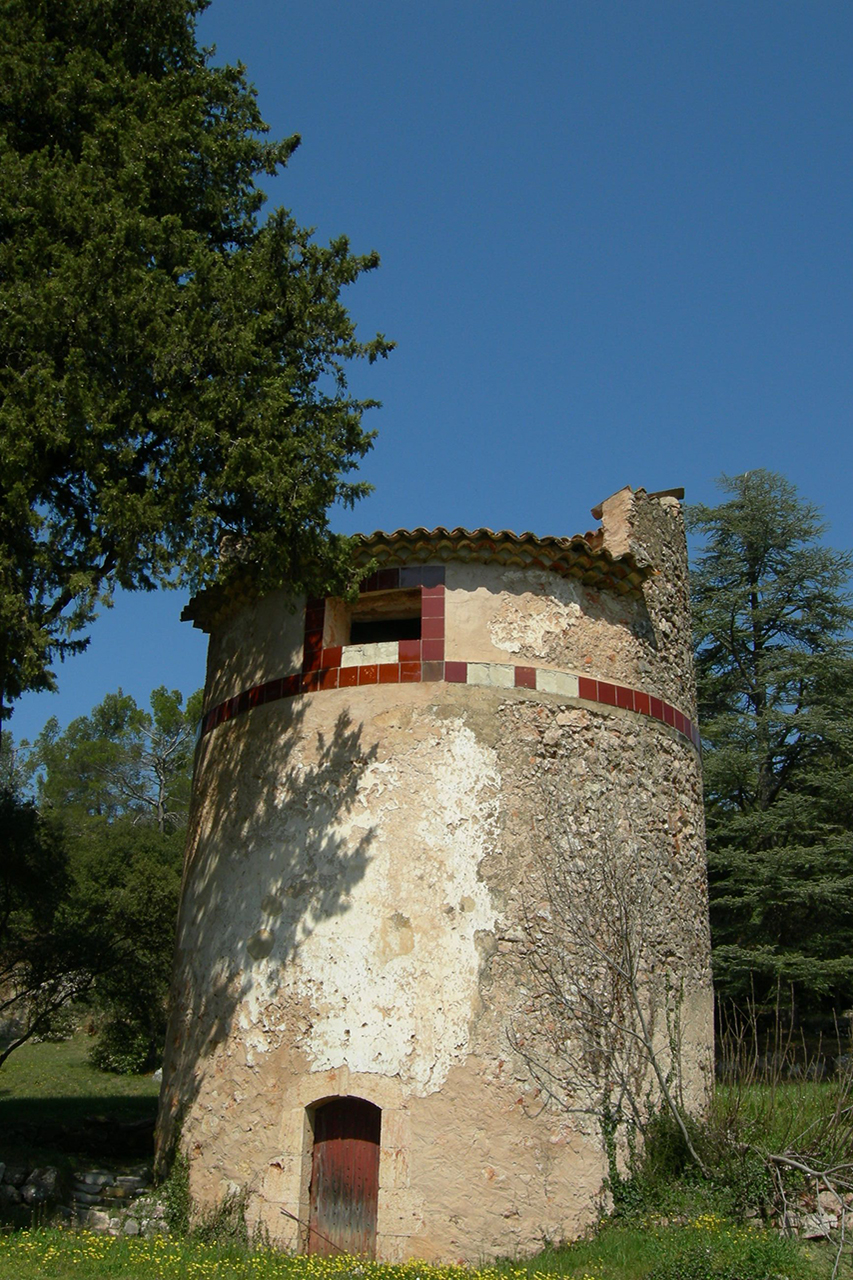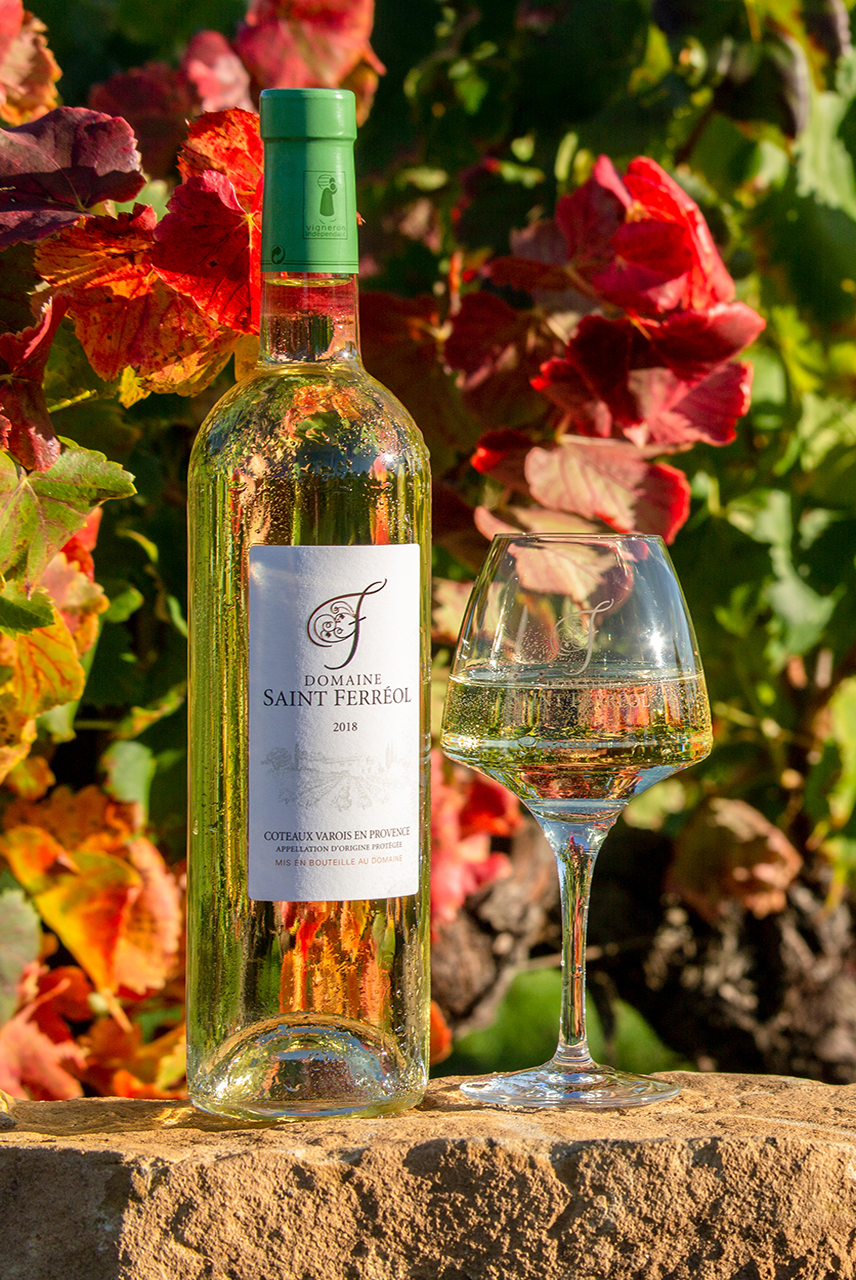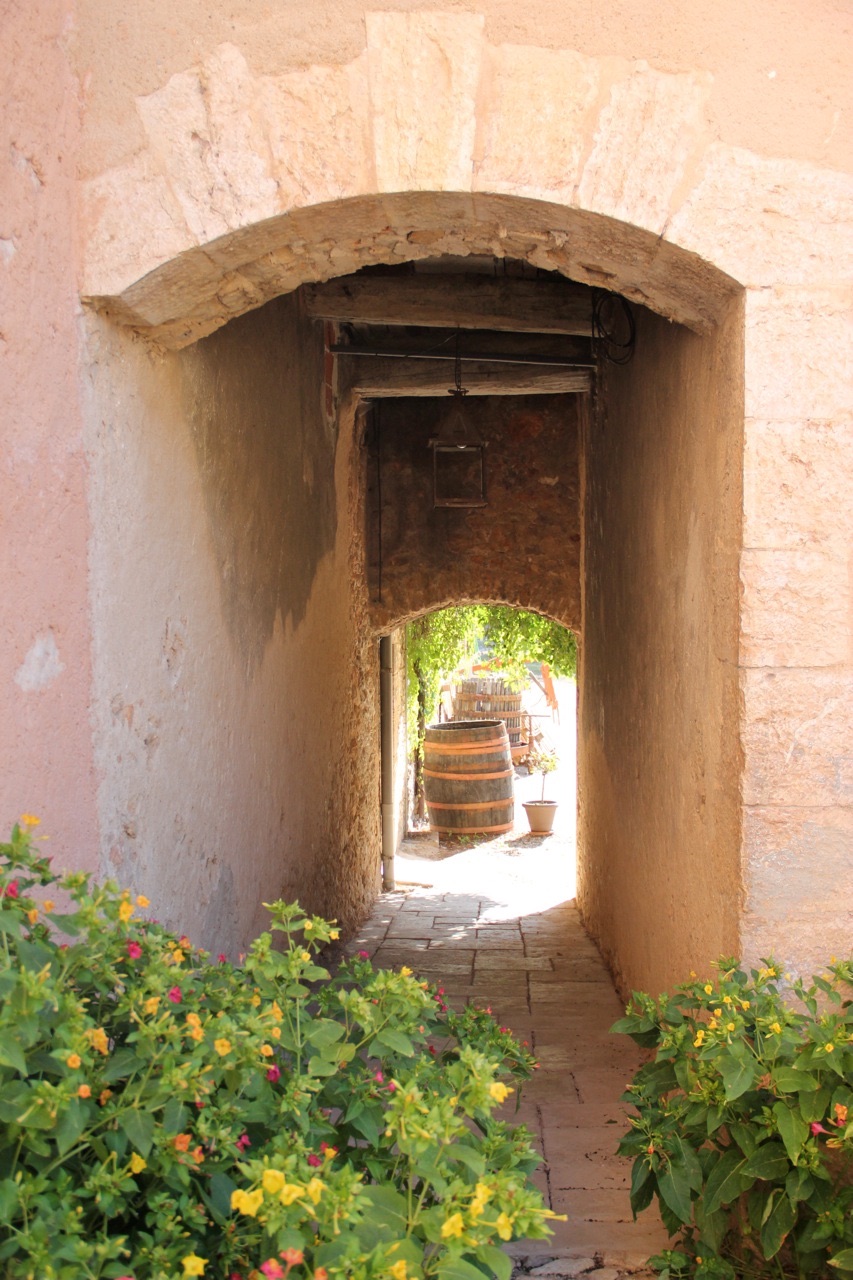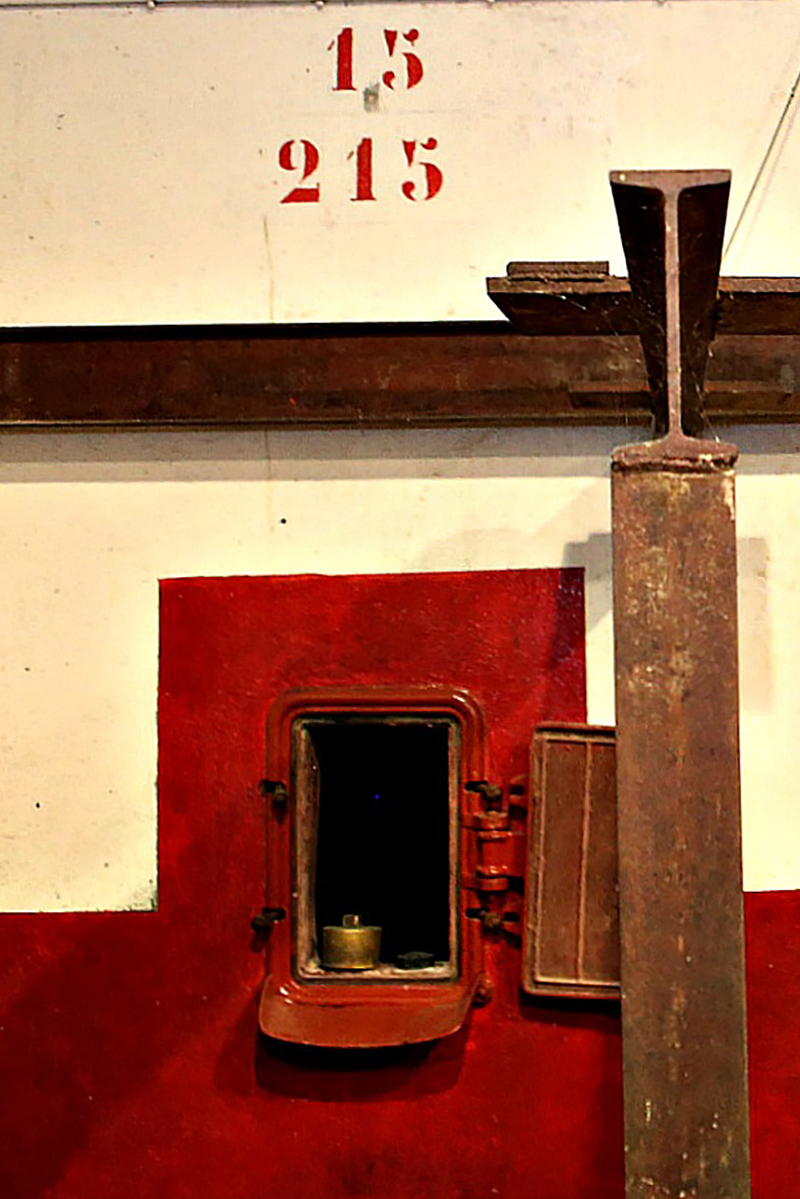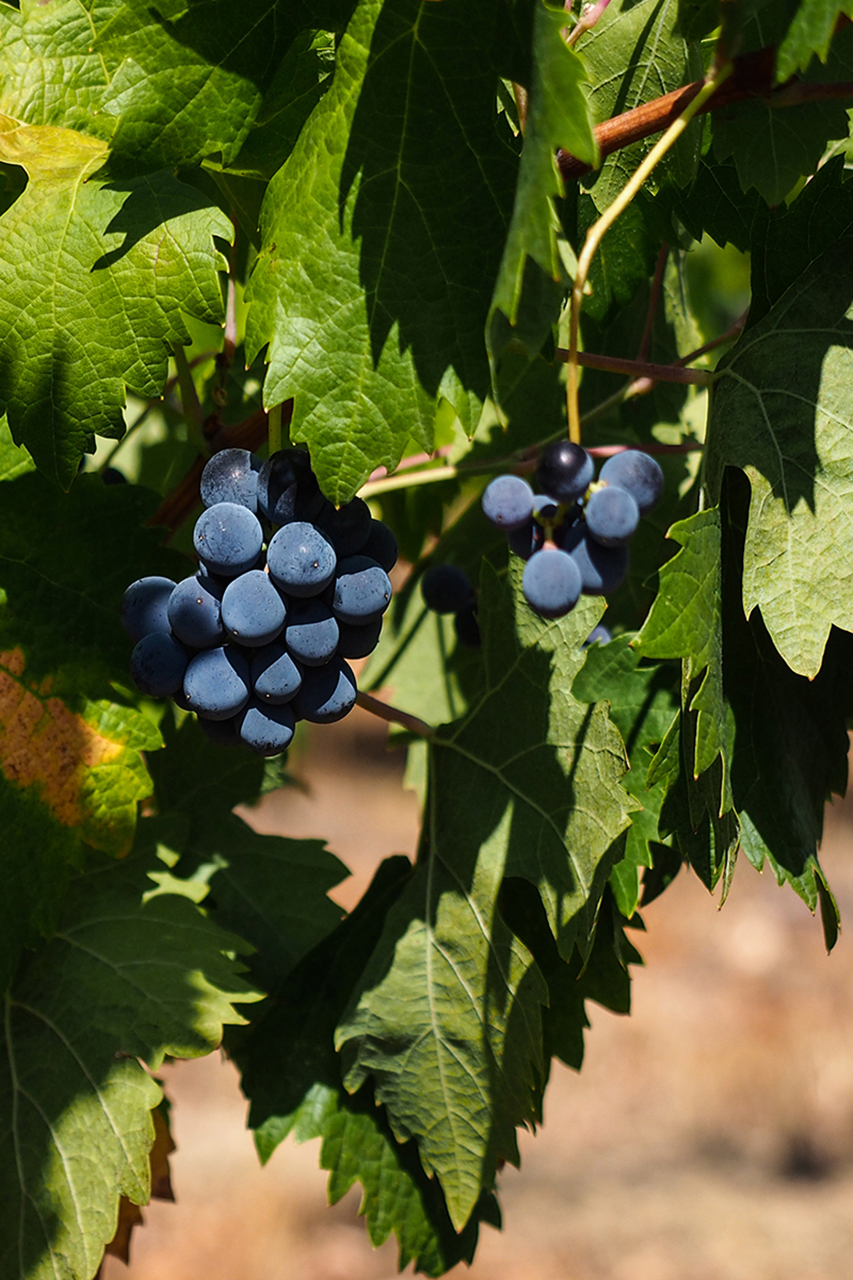Previous inhabitants of the domain
The earliest evidence of human habitation at Saint-Ferréol dates from the 1st century B.C. (burial sites, clay jars, amphoras, rhyolite grindstone, floor made of broken tile). These archaeological evidences prove that people lived there, working the land and making wine at this time. On these lands stood a chapel dedicated to Saint Ferréol who died a martyr in the third century at Vienne (Isère) in Eastern France. The name Saint Ferréol was given in the 17th Century.
Middle Age
Pontevès Family
During the middle ages this lands belong to the Pontevès family. Between the 11th and 13th centuries a castle mound with tower and yard was built overhanging the Riou valley. This fortification seems to have been in connection with the chapel Notre Dame des Salettes whose ruins are located three hundred meters below, near the current buildings. A dovetail screw press counterweight, which was found nearby, may date from this period. At the eastern end of the property and near an ancient cemetery was another chapel, dedicated to the Roman centurion Saint Ferréol, who died a martyr in Vienna (Isère) in the 3rd century. The archives mention farm buildings located near these two chapels at the end of the 15th century. The whole will be called Saint Ferréol in the 17th century.
A bit of history
For years, Domaine Saint
For years, Domaine Saint
Ferréol has been linked to the Provence.
1st Century AD
Remains of agricultural work
Middle Age
Pontevès Family
Late XVth Century
Chapel and farm buildings are present
Late XVIth Century
All land was named Saint Ferréol
XVIIth Century
1650
Pierre Maurel, a rich banker
XVIIIème Century
1720
Joseph Lyon, buyer
1750
Joseph, Joseph Lyon’s grandson
1799
Julie Lyon de Saint Ferréol married Peyrache d’Ampus
XIXème Century
Alphonse François Peyrache d’Ampus and Fanny Heraud, Julie’s children
1848
Jules de Lyle Taulane
father and then son
1873
Claire de Lyle Taulane and then Franck de Jerphanion
1875-1880
Phylloxera
XXème Century
1900
Jean de Jerphanion
1914
Marie de Jerphanion, Jean’s sister
1945
Edouard de Jerphanion
1979
Guillaume and Armelle de Jerphanion
1993
Coteaux Varois
XXIème Century
2018
Thomas de Jerphanion
XVIIth century
Pierre Maurel, a
Pierre Maurel, a
rich banker
In the middle of the XVIIth Century, Pierre Maurel bought the land from Louis de Pontevès. The new owner, a rich financier from Aix en Provence, was nicknamed the King Croesus of Provence. He built a mansion whose architecture was patterned on the trendy Aix countryside’houses. When he died in 1672, Pierre Maurel left behind eighteen children (he had married three times) but also many debts, because of considerable work undertaken in Provence (among them the oldest hotel in Aix en Provence cours Mirabeau, the renovation of the castle of Pontevès). One of his nephews inherited from the estate.
XVIIIème century
Lyon of Saint
Lyon of Saint
Ferréol family
In 1720 Joseph Lyon purchased Saint-Ferréol, when the land and buildings were in poor condition. He undertook major restoration works. His grandson, Treasurer of the States of Provence, continued them by building around the small courtyard in 1750 the central part of the farmhouse. It improves land drainage by capturing the source further upstream. The development is organized around the farm of the Mansion and that of Saint Ferréol. At his death, during the Revolution, the property passed to his daughter, Julie, widow of Alexandre Perrache d'Ampus. Julie remarries and leaves Saint Ferréol to her two children: Alphonse François Perrache d'Ampus and Fanny Héraud.
XIXème century
Lyle Taulane family
Lyle Taulane family
Through marriage, the property was transferred to the family of Lyle Taulane. Jules de Lyle Taulane used his agricultural skills there, in particular by increasing the irrigable area. Within a century the Domain grew to its full size (185 acres of arable land, 494 acres of woodland). New buildings increase the storage capacity of crops and animal housing and allow the grouping of activity on the current site. In the years 1875-1880 the vineyard was destroyed by phylloxera, an insect pest accidentally imported from the United States, which ravaged a large proportion of the vines in Europe.
XXème century
De Jerphanion family
De Jerphanion family
However, from 1899 onwards, the vineyard was gradually replanted, thanks to Jean de Jerphanion, the grandson of Jules de Lyle Taulane. His sister Marie managed the wine estate until her death in 1932. At the end of the Second World War, their nephew, Edouard de Jerphanion, took over and increased the vineyard area to 111 acres. En 1979, Guillaume de Jerphanion replaced his uncle. He and his wife Armelle learned the skills of the peasants `{`...`}` and the wine growers. Thanks to the improvement of vine-planting and the “protected designation of origin” label obtained by the wines produced on the Coteaux Varois area, they were able to make very high quality wines and diversify the sales forms. In 1992, the first bottling took place. And a few years later Armelle opened a wine-cellar for direct sales of wine to the public. At the same time, part of the buildings is renovated to allow for hosting.
Today
Thomas de Jerphanion
